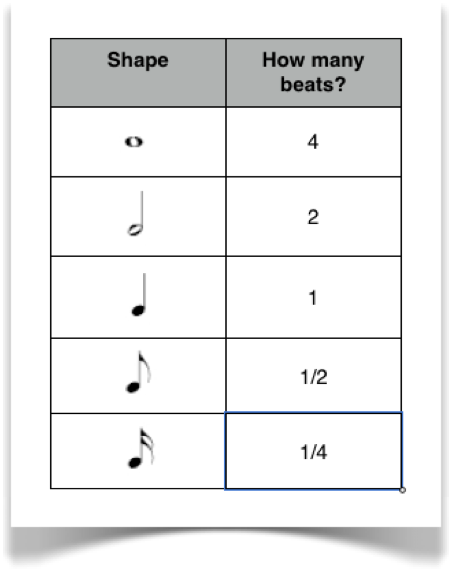
Have you used star dots in published works? Let the author know so it can be added to this list. Published works that have used star dots include: Hudson suggests that the star-dot could be an abbreviation (and mnemonic) for "/
#Musical note durations plus
This notation has gained some fans, but is criticized because the anterior dot interferes with accidentals and ties, plus when in proximity to other notes it can look like the dot belongs to a different notehead. This notation was never well documented, but it was assumed that the posterior dot added a half-duration, while the anterior dot subtracted a quarter-duration. Louis Andriessen sought to solve this problem by removing the modifier dot from the notehead, and put to the right of the stem, aligned with the top of the stem.įirst known use: Louis Andriessen, "Trepidus" for piano (1983) Boosey & HawkesĪvant-garde American composer George Crumb published scores in which a quintuple duration was notated with one dot to the right of the notehead, and another dot to the left.



It has been criticized for the "x" looking similar to a double-sharp, but in practice is only a problem when in close proximity to other notes.įirst known use: Einojuhani Rautavaara, manuscript of double bass concerto: "Angel of Dusk" (1980) pub. This has the advantage of being syntactically similar to a regular augmentation dot. Prolific Finnish composer Einojuhani Rautavaara used an "x" symbol to the right of the notehead. Here are some other proposed solutions for quintuple duration: But it is hardly the first time such a notation has been proposed. Star Dot notation was first revealed to the public on June 2, 2016.
#Musical note durations software
If you have expertise in creating software plugins for these apps, please contribute! Help is needed to create open-source plugins for all the major music notation software packages. Since the star for the topmost note would overlap the star below it, it is moved up to the next space.


 0 kommentar(er)
0 kommentar(er)
